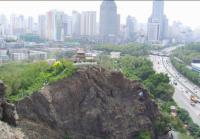Urumqi Introduction
 Located in the northwest of China, Urumqi is the capital of Xinjiang Autonomous Region. With a population of 2.35 million, Urumqi encompasses an area of 12000 square meters with 235.9 square meters for urban downtown. It is said to be the most inland city in the world, that being the furthest from any ocean. Most people in Urumqi can speak some level of Mandarin Chinese.
Located in the northwest of China, Urumqi is the capital of Xinjiang Autonomous Region. With a population of 2.35 million, Urumqi encompasses an area of 12000 square meters with 235.9 square meters for urban downtown. It is said to be the most inland city in the world, that being the furthest from any ocean. Most people in Urumqi can speak some level of Mandarin Chinese. As the political, economic and cultural center of Xinjiang, Urumqi is an expansive industriopolis, which led all the rest of the 11 provincial capitals in western part of China in many fields. Urumqi has seven districts plus one county under its jurisdiction including Tianshan District, Sharyibark District, Toutunhe District, Shuimogou District, Xinshi District, Dongshan District, Nanshan Mine District and Urumqi county.
Urumqi is a multinational city, where 49 nationalities live in compact of mixed communities. Besides Han, the ethnic groups include the Uygur, Hui, Kazak, Mongolian, Kirgiz, Xibe, etc. 24.6% of the total population are minority people. Tourists are always amazed by the unique ethnic life styles and their traditional cultures.
Since Eastern Han Dynasty (25-220 BC), as part of Cheshi Kingdom, the Urumqi and nearby area was put under the administration of the Han Empire. In Tang Dynasty (618 - 907 BC), more troops were sent to the region for farming and guarding the territory to prevent the invasion of nomadic tribes. In Qing Dynasty (1644 - 1911 BC), a city wall was built in the south of present Urumqi, and it was named 'Dihua' by Qianloing Emperor. In 1954, the city name was changed back to 'Urumqi' by the local government.
Nowadays, Urumqi has become a transportation hub at northwest of China, which has international regular flights and trains connecting Russia, Turkey, and central Asian countries. For international tourists, Urumqi is the stopover for the further exploration of Xinjiang and the Silk Road.